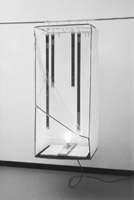I am aware that this post is from 2001 (16 years ago).
If anyone has access to the original article, there appears to be some information missing.
The third paragraph mentions a diagram in its first sentence to aid the reader in assembling the film dryer. This diagram is not visible anywhere on the page, nor is it available via a link.



































